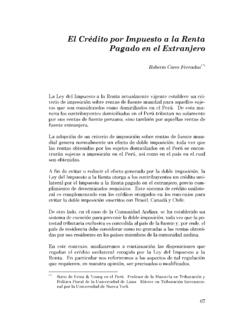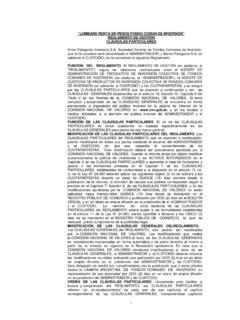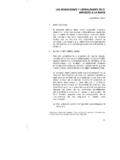Transcription of This PDF is a selection from a published volume …
1 This PDF is a selection from a published volume from the National Bureau of Economic ResearchVolume Title: agglomeration Economics volume Author/Editor: Edward L. Glaeser, editorVolume Publisher: The University of Chicago PressVolume ISBN: 0-226-29789-6 volume URL: Dates: November 30-December 1, 2007 Publication Date: February 2010 Chapter Title: IntroductionChapter Author: Edward L. Glaeser Chapter URL: pages in book: (1 - 14)1 IntroductionEdward L. GlaeserAgglomeration economies are the benefi ts that come when fi rms and people locate near one another together in cities and industrial clusters. These ben-efi ts all ultimately come from transport costs savings: the only real difference between a nearby fi rm and one across the continent is that it is easier to con-nect with a neighbor. Of course, transportation costs must be interpreted broadly, and they include the difficulties in exchanging goods, people, and ideas.
2 The connection between agglomeration economies and transport costs would seem to suggest that agglomerations should become less impor-tant, as transportation and communication costs have fallen. Yet, a cen-tral paradox of our time is that in cities, industrial agglomerations remain remarkably vital, despite ever easier movement of goods and knowledge across transport costs have facilitated trade between China, India, and the rest of the world, but within those countries, development has centered in urban areas. Across the world, urbanization continues to increase, and the United Nations reports that by the end of 2008, one- half of the world will live in Indeed, megacities have become the gateways between those developing countries and the developed world. Within the richer nations of the West, many cities, like New York and London, have experienced remark-able comebacks since the dire days of the 1970s.
3 Wages, population, and especially housing prices in many dense centers have experienced robust growth. Indices of industrial agglomeration show only a slight decrease in concentration over the last thirty years (Dumais, Ellison, and Glaeser Edward L. Glaeser is the Fred and Eleanor Glimp Professor of Economics at Harvard University, and a research associate and director of the Urban Economics working group at the National Bureau of Economic http:/ / esa/ population/ meetings/ EGM_PopDist/ Edward L. Glaeser2002). If transport costs are so low, then why has the urge to agglomerate remained so strong?This volume collects eleven chapters on the economics of agglomeration . They cover far- ranging topics, from the productivity of hospitals to the loca-tion of fast food joints, yet they are all joined by a common goal of seeking to understand why economic activity clusters together.
4 Making sense of this clustering is the crucial step in understanding the present and future eco-nomics of place. All of these chapters approach agglomeration economies from different angles, but taken together, the volume is meant to provide a sample of cutting- edge work on the economics of the chapters in the volume are far ranging, they focus on the agglom-eration of people within countries. Researchers such as Paul Krugman, Tony Venables, and Gordon Hanson have produced much knowledge about the links between agglomeration and international trade. Other research has focused on agglomeration economies within specifi c manufacturing indus-tries in an attempt to understand why some cities specialize in specifi c sec-tors. There is also nothing here on agglomeration economies in the devel-oping world. While these topics are extremely important, the limited space available in one volume precluded their inclusion agglomeration : Prices, Wages, QuantitiesUrban economists infer urban success from high local wages, robust real estate prices, and growth in the number of people within an area.
5 If a place is doing well, then employers should be willing to pay more for workers in that area, people should be willing to pay more for access to that place, and more people should move to that area. The fi rst three chapters in the volume separately consider these three different measures of local economic well- the last forty- fi ve years, the spatial equilibrium has been the primary tool for urban and regional economists trying to make sense of cities. The logic of the spatial equilibrium is that since people can move freely within a nation, they must be indifferent between different locales. This indifference implies that high wages must be offset by high prices or low amenities; other-wise, people would fl ock to high- wage areas. High housing prices refl ect high wages, high amenities, or , the spatial equilibrium concept only gives us one- half of the labor market equilibrium that determines area wages.
6 The other half is labor demand the willingness of fi rms to pay for their workers. So, while high wages must refl ect something bad about an area, like high prices or poor amenities, high wages must also refl ect something good about an area that makes fi rms willing to tolerate a high cost of labor. Firms wouldn t continue to locate to New York City or the San Francisco Bay region unless those areas were productive enough to offset the cost of expensive economics tells us that wages refl ect the marginal product Introduction 3of labor. In a standard Cobb- Douglas formulation of the producer s prob-lem, where most capital is mobile, the high marginal product of labor in a given area must either refl ect a high productivity level or an abundance of nontraded capital inputs to production. Wages, therefore, can be interpreted as telling us about the core determinants of urban productivity, and high wages in an area are usually interpreted as meaning that the area is unusu-ally of the facts that supports the existence of agglomeration economies is the strong relationship between density and high wages.
7 This fact is mir-rored in the strong relationship between area density and per capita gross metropolitan product (GMP) shown in fi gure 1. This fact is quite statistically robust, but the causal chain in the relationship is difficult to infer. Does the density- productivity relationship mean that the dense places become more productive or that productive places attract more people? The need to tease out the direction of causality in this relationship motivates the fi rst chap-ter in this volume , on agglomeration in France, written by Pierre- Philippe Combes, Gilles Duranton, Laurent Gobillon, and S bastien chapter looks at the connection between density and both wages and total factor productivity in France. They start by confi rming the existence of a strong, robust relationship between density and both wages and pro-ductivity in France. This fact parallels the well- known density- productivity relationship in the United States (Ciccone and Hall 1996).
8 They then con-sider two challenges in interpreting this fact as evidence for agglomeration economies. One possibility is that dense places are more productive because they attract more skilled workers. Glaeser and Mare (2001) fi nd little evi-Fig. 1 Area density and per capita GMP4 Edward L. Glaeserdence that this is the case in cities, but the selection of the skilled into cities seems to be much stronger in France. They use an individual fi xed effects approach and fi nd that allowing for individual fi xed effects reduces the estimated impact of density on wages by about one- second contribution is to use a wide range of historical and geologi-cal instruments for current density levels. Population patterns in France are remarkably permanent. The density of districts in France today is highly correlated with density 170 years ago and with basic features of the soil.
9 Their instrumental variables estimates are generally quite close to estimates found using ordinary least squares. As long as we believe that these instru-ments are not independently correlated with productivity today, then this provides evidence for strong agglomeration economies. If readers doubt that this orthogonality condition holds, then their results at least provide a strik-ing set of facts about the correlation between geology and estate prices provide a second means of assessing the success of an area. One sign that agglomeration has been doing well over the last twenty- fi ve years is that housing prices have risen more dramatically in dense met-ropolitan areas. Figure 2 shows the percent correlation between den-sity in 1980 and price growth between 1980 and 2006 (calculated using the Office of Federal Housing Enterprise Oversight repeat sales index). The spatial equilibrium framework suggests that this fact can either mean that dense places have become more pleasant over time or that dense places have become more the growth in housing prices has not been uniformly experienced across all metropolitan areas.
10 Some places, like San Francisco and New York City, have been christened superstar cities by the authors of the sec-ond chapter in this volume : Joseph Gyourko, Christopher Mayer, and Todd Sinai. Their chapter documents the extraordinary price growth of a small set of urban areas, which has continued decade by decade since 1940, and then tries to understand the causes for price growth in these speaking, high prices in a region can refl ect economic vitality that pushes up wages, consumer amenities that increase the willingness to pay to live in an area, or rigid housing supply. Gyourko, Mayer, and Sinai argue that rising prices in superstar cities cannot be completely explained by rising productivity levels in those areas. They argue instead that these places have high amenities and restrictions on housing supply. Rising levels of inequality in the country as a whole have led the wealthiest Americans to be willing to pay more and more to live in high- amenity areas of the growth of population or employment provides a third means of mea-suring local success.

















